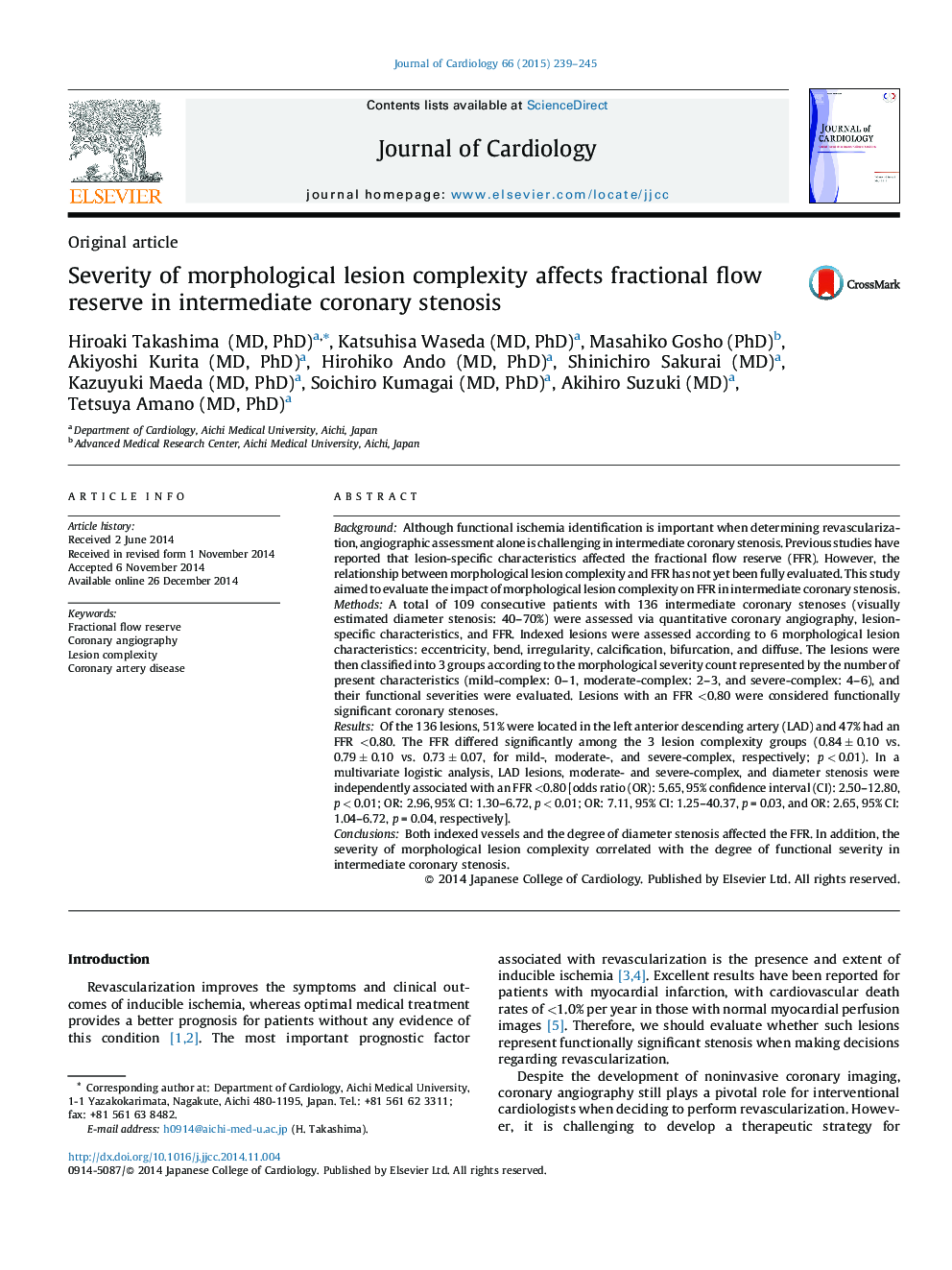| Article ID | Journal | Published Year | Pages | File Type |
|---|---|---|---|---|
| 2962885 | Journal of Cardiology | 2015 | 7 Pages |
BackgroundAlthough functional ischemia identification is important when determining revascularization, angiographic assessment alone is challenging in intermediate coronary stenosis. Previous studies have reported that lesion-specific characteristics affected the fractional flow reserve (FFR). However, the relationship between morphological lesion complexity and FFR has not yet been fully evaluated. This study aimed to evaluate the impact of morphological lesion complexity on FFR in intermediate coronary stenosis.MethodsA total of 109 consecutive patients with 136 intermediate coronary stenoses (visually estimated diameter stenosis: 40–70%) were assessed via quantitative coronary angiography, lesion-specific characteristics, and FFR. Indexed lesions were assessed according to 6 morphological lesion characteristics: eccentricity, bend, irregularity, calcification, bifurcation, and diffuse. The lesions were then classified into 3 groups according to the morphological severity count represented by the number of present characteristics (mild-complex: 0–1, moderate-complex: 2–3, and severe-complex: 4–6), and their functional severities were evaluated. Lesions with an FFR <0.80 were considered functionally significant coronary stenoses.ResultsOf the 136 lesions, 51% were located in the left anterior descending artery (LAD) and 47% had an FFR <0.80. The FFR differed significantly among the 3 lesion complexity groups (0.84 ± 0.10 vs. 0.79 ± 0.10 vs. 0.73 ± 0.07, for mild-, moderate-, and severe-complex, respectively; p < 0.01). In a multivariate logistic analysis, LAD lesions, moderate- and severe-complex, and diameter stenosis were independently associated with an FFR <0.80 [odds ratio (OR): 5.65, 95% confidence interval (CI): 2.50–12.80, p < 0.01; OR: 2.96, 95% CI: 1.30–6.72, p < 0.01; OR: 7.11, 95% CI: 1.25–40.37, p = 0.03, and OR: 2.65, 95% CI: 1.04–6.72, p = 0.04, respectively].ConclusionsBoth indexed vessels and the degree of diameter stenosis affected the FFR. In addition, the severity of morphological lesion complexity correlated with the degree of functional severity in intermediate coronary stenosis.
